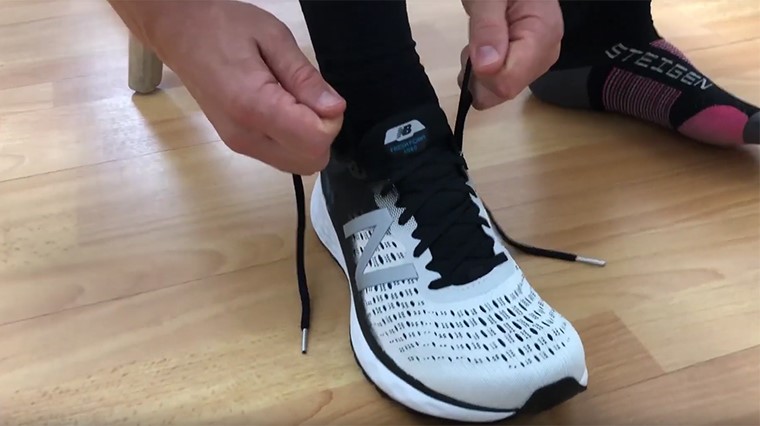How To: Runner's Lock Shoe Lacing System

Josh shares his know-how on how to lace your running shoes properly including achieving ideal lace tension, a snugger heel fit and reduced risk of blisters with the "runner's lock" shoe lacing system.
Don't get your laces in a twist. Check out the full video with transcript below.
Hi guys, Josh from Sportitude here and today I have an education session. We're going to be doing a video on how to lace your running shoes up correctly.
Surprise, surprise, there are still a number of people that haven't mastered the art of getting the right support on their foot when they're going to go for a run.
The lacing system you choose at home can alter the overall support in the upper and either make your run a good run or make your run a bad run.
What we're here to do is show you a couple of little tricks on how to get that secure fit in the back of the heel and we're going to be doing it using my New Balance 1080v9 right here.
For every single brand that we carry and this is going to be the same for nearly every running store globally, when the shoes come from the manufacturers we always see them lace up to either the second to last or third to last eyelet.
What that basically does is if you put a shoe on that doesn't go all the way to the last eyelet you aren't getting a really customised fit around the back of your heel.
You can lace this shoe up to the last hole quite simply by doing that there and crossing over and doing that there, and I'll bring that a little bit closer to so you can see I've utilised the last hole.
However, sometimes that isn't enough support so I'm going to jump out of this video room and I'm going to lace my shoes up with a heel lock, "runner's lock" or lock lace. Whatever name you would like to call it, it does not matter, but I'll show you the runner's lock lacing system, which I encourage all runners out there to use if they can. Let's get stuck in.
With the lock lace or runner's lock lacing system, you'll see it's a little tricky so please pay attention to what we're about to do.
We're going to put the shoe on your foot and we're going to leave the last eyelet out. I'm going to go from inside to out on that second to last lace on both sides.
I'll slip my foot into the shoe. Coming down first things first, you want to get plush tension from the bottom of the lace right the way up. That's just taking the slack out of your laces, getting to the top through here and getting it to a tension that you prefer.
Now again that's subjective. Some people like to go really tight. I don't recommend that because once you start running your foot will expand and swell and if you don't have enough space for swelling it's going to cause pins and needles and a little bit of discomfort in your running shoes.
Get a firm tension where you still have a bit of wriggle space in your toes. What we're doing now is we lay the laces out to the side and then we create almost like an elephant ear on each side.
I'm going to come back in through here, so from the outside in on that last lace. I'm going to get it through to about there, forming a circle or lace loop about so big.
Then I'll repeat the process on the other side, so from the outside in using that last eyelet and getting it through there like so.
Now the goal is to get the opposing lace and cross it over through the loop you've created and do the same thing on the other side. Then the lacing trick we do is to pull the tension up and then down.
Do that two to three times so that the actual loop itself, the lock lace loop, will become smaller and smaller. Once we've done that we then tie your shoe laces up to your preferred tension and away we go.
Now note I have a unique way of doing my shoe laces up. Everyone has different ways but obviously the goal is the same.
Don't be a slacker, always do a double knot. Therefore, you reduce the risk of the shoe laces coming undone. There we have it that is the runner's lock shoe lace system.
The goal is that when I'm running and toeing off, it's going to reduce the friction and move it to the back of the heel. That's going to increase comfort and reduce the risk of getting a blister.
For those of you who wear orthotics with a bit of a high heel wedge and your heel sits higher in the shoe, I encourage this runner's lock lacing system.
There we go guys that's the runner's lock lace.
